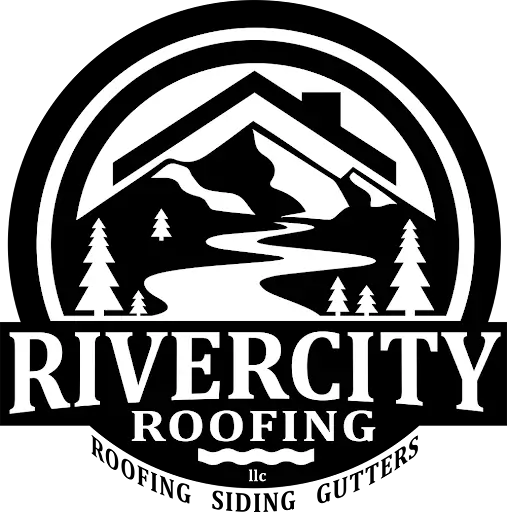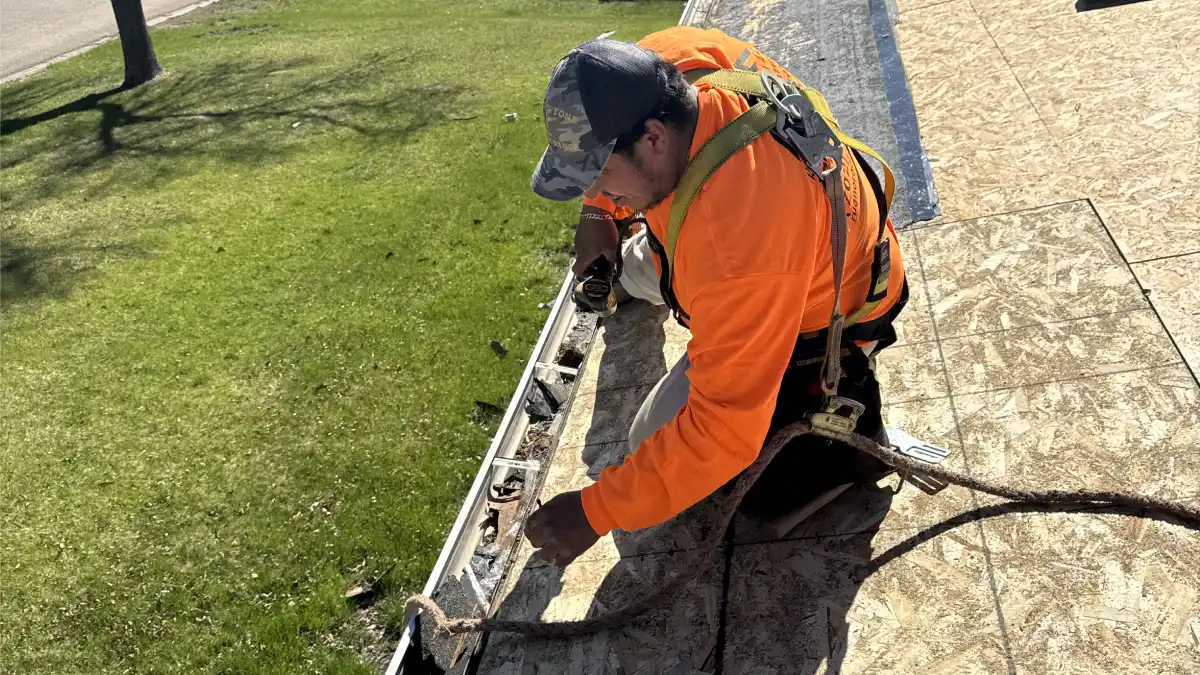When it comes to protecting your home from water damage, the choice between seamless gutters vs regular gutters can make a significant difference. Homeowners often find themselves weighing the pros and cons of these two options, considering factors such as durability, maintenance, and cost. Many choose seamless gutters for their ease of maintenance and aesthetic appeal, as they are custom-fabricated and lack joints, providing a more durable, long-lasting solution despite a higher initial cost. Understanding the key differences between seamless and traditional gutters is crucial for making an informed decision that best suits your home’s needs.
This article delves into the world of gutter systems, comparing seamless gutters vs traditional options. We’ll explore what seamless gutters are made of, how long they last, and the installation process for both types. Additionally, we’ll examine the maintenance requirements and overall costs associated with each option. By the end, you’ll have a clear understanding of which gutter system might be the right choice for your home.
Understanding Gutter Types
When it comes to protecting homes from water damage, homeowners have two main options: regular gutters and seamless gutters. The choice of gutter material, such as aluminum, vinyl, or copper, can significantly affect the performance, aesthetics, and maintenance of these gutters. Each type has its own characteristics, advantages, and considerations. Let’s explore these gutter types in detail.
Regular Gutters
Regular gutters, also known as sectional gutters or traditional gutters, are designed in precut sections that are easy to assemble. These gutters are typically pieced together in 10-foot or 20-foot sections and have multiple seams. Each gutter section is joined together with connectors or couplings, and each section must be soldered or sealed at the joint.
Regular gutters come in various materials, each with its own benefits:
- Vinyl: Growing in popularity due to their rust-resistance and simple installation. They’re budget-friendly but may deteriorate over time due to extreme weather conditions.
- Steel: The strongest material, ideal for heavy snow and extreme weather. However, steel can rust and is heavier, making installation more challenging.
- Aluminum and Copper: Both strong and rust-resistant. With proper maintenance, they can last for several decades. Aluminum gutters offer a wide range of color options.
Seamless Gutters
Seamless gutters are continuous gutters usually made from aluminum, copper, painted steel, or zinc. Aluminum seamless gutters are particularly popular among homeowners due to their lightweight and rust-resistant properties, which enhance durability against the elements. They typically only have joints or miters at the corners where they wrap around the roof. Seamless gutters are roll-formed on-site using a special machine, ensuring a perfect fit for each home.
Key features of seamless gutters include:
- Custom-made to match exact home dimensions
- Fewer joints, reducing the risk of leaks
- Sleek appearance that enhances curb appeal
- Available in various materials like aluminum, copper, and steel
Key Differences
The main differences between regular and seamless gutters, unlike seamless gutters, lie in their installation, maintenance, and performance:
- Installation: Regular gutters can be installed by experienced DIYers, while seamless gutters require professional installation.
- Maintenance: Regular gutters need frequent checking of joints and seals, while seamless gutters are easier to maintain due to fewer connection points.
- Leakage: Seamless gutters are less prone to leaks due to fewer seams, significantly reducing the likelihood of water damage.
- Durability: Seamless gutters generally offer better longevity and performance compared to regular gutters.
- Cost: While seamless gutters may have a higher upfront cost, they often prove more cost-effective in the long run due to lower maintenance needs and better durability.
Free Roof Inspections. Fast. Reliable.
Is your roof ready to weather the storm? Dont risk property damage. Our free roof inspections provide expert analysis to identify potential issues before they become costly problems.
Installation Process
Regular Gutter Installation
Regular gutters are popular for DIY installation. These prefabricated gutters come in 10-20 foot sections, which are attached together with connectors and caps. Droplet outlets intersect with downspouts to complete the system.
Box gutters, on the other hand, are a stylish and functional alternative that enhances the aesthetic value of buildings while effectively managing rainwater runoff. Known for their durability and contemporary appeal, box gutters can withstand heavy rainfall, making them a favored choice for various types of structures.
While a DIY gutter project may seem straightforward, it requires careful planning and some additional investment. Homeowners need to consider factors such as:
- Purchasing the right materials and tools
- Measuring and cutting gutter sections accurately
- Ensuring proper slope for effective drainage
- Securely attaching gutters to the fascia board
For those comfortable with home improvement projects, installing traditional gutters can be a cost-effective option. However, it’s important to note that proper installation is crucial to prevent future issues.
Seamless Gutter Installation
Seamless gutters require professional installation using specialized equipment. The process involves:
- A portable gutter machine that forms gutters on-site
- Custom fitting gutters to the house’s specific dimensions
- Professional knowledge of water flow and landscape protection
Seamless gutters are typically nailed to the fascia board along the roofline. For houses without fascia boards, professionals install fascia gutters that hang from the framing.
The cost of seamless gutter installation averages about USD 2.50 per foot, including machinery use. However, factors such as location, job complexity, and additional services like removing existing gutters can affect the final seamless gutters cost.
Comparison
When comparing the installation processes of traditional and seamless gutters:
- DIY vs. Professional: Traditional gutters can be a DIY project, while seamless gutters require professional installation.
- Customization: Seamless gutters offer a perfect fit for each home, reducing the chances of leaks.
- Equipment: Seamless gutter installation requires specialized tools and machinery not typically available to homeowners.
- Time and Effort: Professional seamless gutter installation is often quicker and more efficient than DIY traditional gutter installation.
- Cost: While DIY traditional gutter installation may seem more cost-effective initially, professional seamless gutter installation can provide long-term value through better performance and fewer maintenance issues.
Ultimately, the choice between traditional and seamless gutter installation depends on factors such as budget, skill level, and desired long-term performance.
Maintenance and Durability
Regular Gutter Maintenance
Regular gutters require more frequent attention due to their sectional design. Homeowners should clean these gutters at least twice a year, typically in spring and fall. This involves removing debris like leaves, twigs, and dirt that accumulate over time. To clean effectively, start by removing large debris by hand or with a scoop, then use a garden hose to flush out remaining particles.
Copper gutters, while more expensive and requiring more maintenance, offer a high-end, durable option that can last up to 50 years.
Regular inspection is crucial for identifying potential issues such as leaks, loose fasteners, or damage. Check joints and seams for gaps or separation. Prompt repairs are essential to prevent further damage and maintain the gutter system’s functionality.
Seamless Gutter Maintenance
Seamless gutters, while requiring less maintenance, still need regular care. Cleaning twice a year is recommended, with additional checks if the property is surrounded by trees. The seamless design reduces debris accumulation and makes cleaning easier.
One of the seamless gutters pros is their reduced maintenance needs due to the custom fabrication that minimizes leaks and blockages.
Inspecting seamless gutters involves looking for signs of damage like cracks, leaks, or sagging. Pay attention to any blockages preventing proper water flow. Early detection of issues can prevent major problems and ensure the longevity of the system.
Longevity Comparison
Seamless gutters generally offer superior durability compared to regular gutters. Their design, with fewer joints, makes them stronger and more resistant to leaks and corrosion. This translates to a longer lifespan, often outlasting traditional gutters by decades. One of the seamless gutters pros is their increased longevity due to custom fabrication and reduced risk of leaks, which also means lower maintenance over time.
Regular gutters, while initially more cost-effective, may require more frequent repairs and replacements. Their sectional nature makes them more prone to leaks at the seams, potentially leading to water damage and higher long-term maintenance costs.
We at River City Roofing, having 20+ years of experience, understand the importance of proper gutter maintenance for both types. Regular cleaning, inspection, and timely repairs are key to maximizing the lifespan of any gutter system, ensuring effective water drainage and protecting your home’s foundation.
Conclusion
The choice between seamless gutters and regular gutters has a significant impact on your home’s protection against water damage. Seamless gutters offer advantages in durability, maintenance, and overall performance, making them a worthwhile investment for many homeowners. Their custom-fit design and fewer seams reduce the risk of leaks and require less upkeep over time.
To sum up, both gutter types have their merits, but seamless gutters often prove more cost-effective in the long run. The decision ultimately depends on your specific needs, budget, and home layout. Whichever option you choose, proper installation and regular maintenance are key to ensuring your gutter system effectively protects your home for years to come.
FAQ
Do seamless gutters offer better performance than regular gutters?
Yes, seamless gutters generally provide superior performance compared to traditional gutters. They are more robust and less susceptible to debris buildup, which enhances their durability over time.
What are some drawbacks of seamless gutters?
While seamless gutters offer several advantages, they also have some disadvantages. They are typically more expensive initially due to the custom-fit and labor involved. Additionally, any necessary repairs or replacements may require attention to the entire gutter system, as they are custom-made.
Are seamless gutters a worthwhile investment?
Seamless gutters are considered a good investment for many homeowners. They improve water flow and effectively direct water away from the home, which can prevent water damage. Although they are more expensive upfront, their long-term benefits in reducing maintenance and repair costs can be significant.
Is it necessary for gutters to be seamless?
While not strictly necessary, seamless gutters are often more effective than regular gutters. Both types aim to protect your home from water damage by directing water away from the foundation, but seamless gutters typically do this more efficiently due to their continuous design, which minimizes leaks.
What should I consider when choosing between seamless and regular gutters?
Choosing between seamless and regular gutters depends on several factors including budget, maintenance preferences, and esthetic considerations. Seamless gutters offer a sleek appearance and less maintenance but come at a higher initial cost. Regular gutters are more budget-friendly but may require more upkeep.
ould I consider when choosing between seamless and regular gutters?




Comments are closed